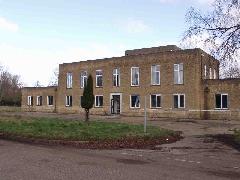Squadron History

49 Squadron was formed at Dover on 15 April 1916 under the command of Major A S Barratt MC and spent its first 18 months as an aircrew training unit equipped with BE2Cs and RE7s. Other documents record that the squadron also trained using Martinsydes and a number of pilots are described as "flying officers for Martinsydes".
In November 1917 the squadron was re equipped with DH4s and moved to La Bellevue aerodrome in France. Here the squadron was employed in the day bomber role as part of the 3rd (Army) Wing. Its first raid was made on 26 November 1917.

Later the squadron took part in the Battle of Cambrai, attacking enemy supply and communications centres. In April 1918, 49 Squadron re equipped with DH9s and continued high and low level bombing until the end of the war. After the Armistice the squadron moved to Bickendorf as part of the Army of Occupation and disbanded there on 18 July 1919. According to its records 49 Squadron destroyed 56 enemy aircraft drove down another 63 out of control, dropped a total of 120 tons of bombs and operated from 10 airfields in France during the 1914-18 War.

On 10 February 1936, 49 Squadron re formed at Bircham Newton from a nucleus provided by 'C' Flight of No 18 Squadron. It was equipped with Hawker Hind light bombers and initially commanded by Flt Lt J C Cunningham. It moved to Worthy Down in August 1936 where its official badge, depicting a racing greyhound surmounting the motto 'Cave Canem' (Beware of the Dog), was presented on 14 June 1937. At first the badge seems inappropriate for a bomber squadron but it is in fact indicative of the performance of the Hawker Hind when compared with its contemporaries. A move to Scampton in March 1938 was followed by conversion to the Handley Page Hampden, the first unit to be equipped with the type.
Further details of WW1 operations are described in the 'Airfields' section

During the opening months of World War 2 the squadron was employed mainly on reconnaissance, mine laying and leaflet dropping. On 11 May 1940 bombing attacks on Germany began, the oil refineries at Munchen Gladbach being attacked. On 12 August a most successful low level attack on the Dortmund Ems canal was pressed home by Hampdens of 49 Squadron despite fierce opposition. Flt Lt R A B Learoyd received the Victoria Cross for his bravery during the attack, the first awarded in Bomber Command.

Throughout 1941 many targets were attacked; ports, industrial centres, shipping, marshaling yards and airfields. In March 1942 the squadron took part in a particularly successful attack on the Renault works at Billancourt, Paris.
The squadron began to re equip with Manchester aircraft in April 1942; however, these aircraft were not in use for long and by July 1942 were replaced by Lancasters which, with their greater range and striking power, extended the scope of the squadron's operations.

On 17 October 1942 the squadron flew deep into France without escort and attacked the Schneider works at Le Creusot; the Commanding Officer, Wing Commander L Slee and his navigator Pilot Officer A C Grant, led the attack and both were awarded the DSO. Italy could now be reached and 49 Squadron's first operation in that theatre was an attack on the harbour at Genoa on 22 October 1942.

The Squadron stood down from 1-15 January 1943 during which time a move was made to Fiskerton. Operations resumed on 16 January when the squadron attacked Berlin the first of many such visits. For the remainder of the war the squadron continued as a front line bomber squadron and took part in most major operations by Bomber Command including, in August 1943, the vital attack on the rocket research establishment at Peenemunde when the squadron lost four of the twelve Lancasters despatched.

After moving to Fulbeck on 16 October 1944, then Syerston on 22 April 1945, the squadron made its last attack on 25 April when Berchtesgaden was the target. In May the squadron took part in Operation 'EXODUS' ferrying ex -prisoners of war back to the UK.

Honours and awards gained by members of 49 Squadron during the Second World War include 1 Victoria Cross, 1 Empire Gallantry Medal (later the George Cross), 7 Distinguished Service Orders, 131 Distinguished Flying Crosses, 2 Conspicuous Gallantry Medals and 105 Distinguished Flying Medals.



49 Squadron was re-formed at Wittering on 1 May 1956 from personnel of 'C' Flight No 138 Squadron. Equipped with Valiant B1 aircraft (the first of the V Bombers) the squadron was tasked with carrying out a series of nuclear tests based on Christmas Island in the Pacific Ocean. Initially commanded by Squadron Leader D Roberts, DFC, by 2 September 1956 the squadron had been brought up to strength by additional crews from No 214 Squadron and No 232 OCU, and Wing Commander K G Hubbard, OBE, DFC assumed command. The nuclear tests were code named 'Operation GRAPPLE' and, on the 15th May 1957, the squadron made history by successfully dropping the first British nuclear weapon with a yield in the megaton range.
The 'GRAPPLE' series of trials (Grapples X,Y & Z) continued until the 11th September 1958 with nuclear weapons being dropped by most of the squadron's crews.

From November 1959 the squadron reverted to the normal medium bomber role. It moved to Marham on 26 June 1961. On 5 June 1964 Her Royal Highness Princess Marina, Duchess of Kent, presented 49 Squadron with its standard, which was awarded in April.
